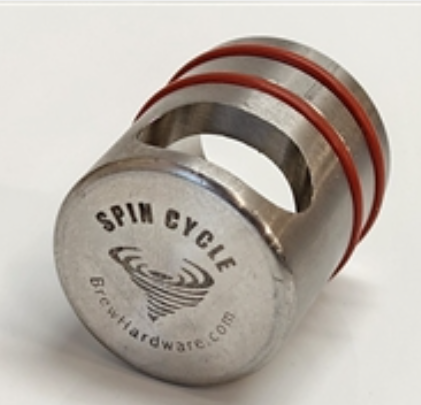The slingblade elements have been setup like that for years and it tracks with what Blichmann does with the boil coils. Sure, more power is more better. When I build systems with slingblades, I cheat a bit and cram the next size up into the pots, e.g. the 5000 goes into the 15 with a little radius manipulation and the 5750 goes in the 20s.
The main reason it's not a deal breaker is that heating 13 gallons of strike water on 4500w to 160F takes 38 minutes and on 5500 it's 31 minutes. 7 minute difference. About the same amount when ramping to a boil. If you're running this as a 3 vessel system, 7 minutes of heat time is the least of your brew day worries.
2x7=14 minutes. I'll take that repeating time over the course of the product life back. A little hotter than 160 for some mash temps and another 40+ degrees for a boil. With times dependent on specific batch sizes and equipment. Probably 80-90% of the time I am brewing 6 gallons. But 15 minutes is worth having. I do multitask, so perhaps not lost but I don't want the hobby to be work.
Between the 4500 and their 5750 however, the length difference is only 2.75 inches. But for electric, installing a 240V 20 amp line vs a 30 isn't really different in cost, it's mostly the labor cost there, with the labor not being particularly different for either. And the material used for the element is bendable and probably the same across sizes, just longer. They could arc the slingblade a little further but vary the curve for a few pot sizes, instead of dropping the wattage as the intended pot size drops. Right now, the prices listed goes up $10 a size class. Which is somewhat artificial. I get it costs some to differentiate, but does the wattage really need to change too? I wasn't going to drop my wattage to move my element from the middle to the side and pay more! And perhaps the boilcoil can't increase wattage since it's a circle (go wavy?), but they charge even more and hook up with their own special plug so you need the cord too!
Reading the OP, I originally thought it might be steam, and following the link the jacket made me think glycol since it looks similar to a jacketed conical. Water makes sense though. You wouldn't have to deal with cleaning the chiller and some would find that useful. It would save me almost 0 time as I CIP my CFC, which is necessary for my HERMS coil anyway. Probably does need a whirlpool going, so a pump would help a lot. Then how fast does it chill and how that might fit into a specific brew rig and protocols will vary. I do think it could be desirable vs an IC or a PC as far as cleaning and against a CFC, no worries about what you can't see inside the tubing.
Yes indeed, dropping from 100 is quick with a glycol chiller. I drop down to about around 100F with my perpetual chiller and transfer. Before I was cleaning up this past weekend, the wort was already at pitching temp (68F). And the week before, the same and it was 10 gallons and steam beer temp (60F). For me, I didn't use any water to chill. I was at about 105F with the pepertual chiller, which could be improved slightl, but by the time I switched hoses and transferred it was under 100. I'd say from fermenter mass absorbing heat.



























![Craft A Brew - Safale S-04 Dry Yeast - Fermentis - English Ale Dry Yeast - For English and American Ales and Hard Apple Ciders - Ingredients for Home Brewing - Beer Making Supplies - [1 Pack]](https://m.media-amazon.com/images/I/41fVGNh6JfL._SL500_.jpg)































